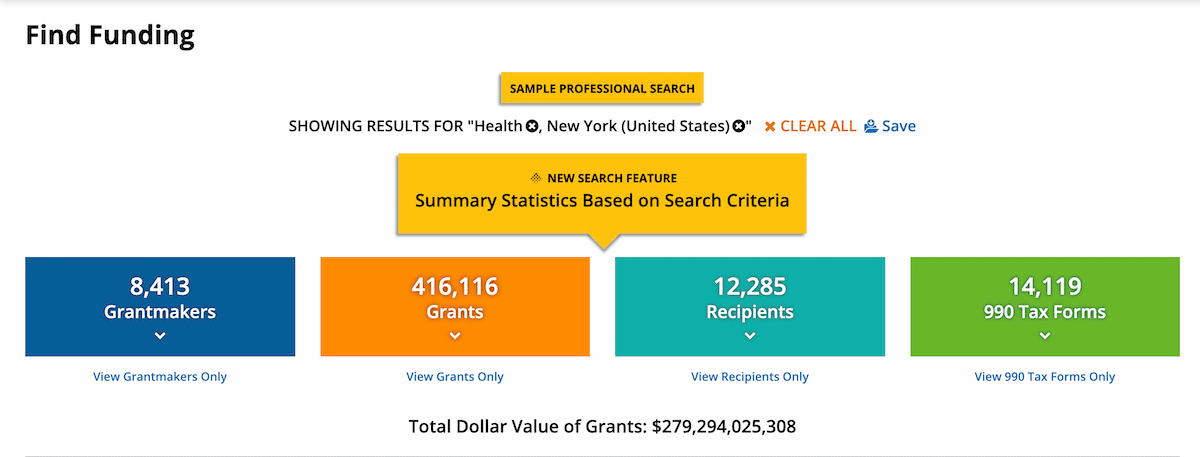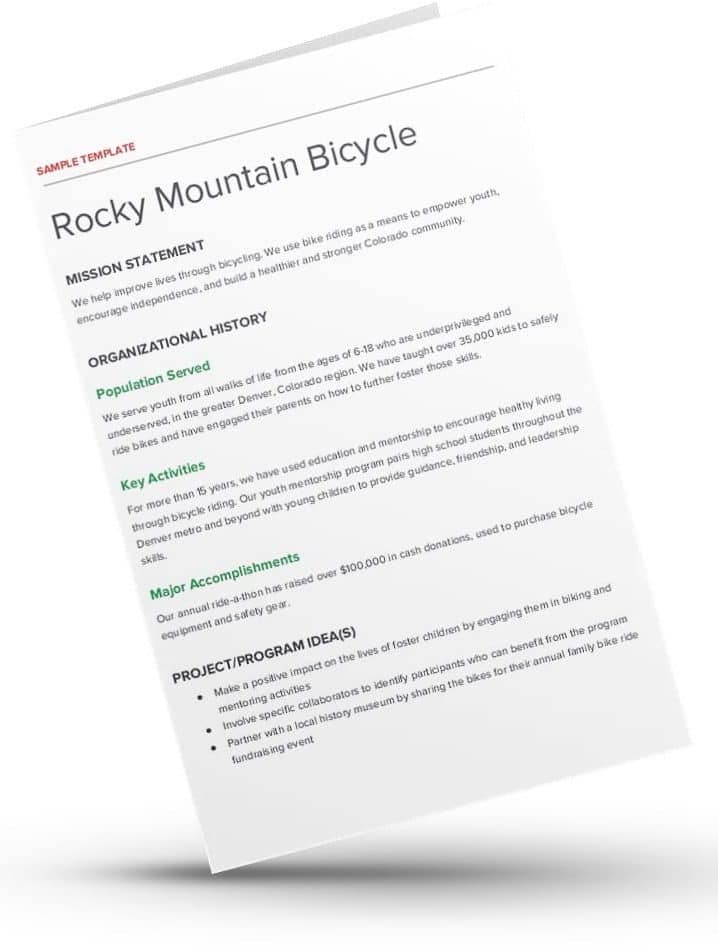Get Funding For Your Nonprofit By Building This Crucial Relationship

In the grant seeking process, an important factor affecting success is building a relationship with the funder, which ideally should start prior to submitting a grant application. Unless a funding organization specifies that you should NOT reach out to them, it is perfectly acceptable (and highly recommended) to do so.
After vetting and identifying foundations that are a good fit for your organization, effective communication will be critical to funding success. The focus of this article is on establishing personal connections with program officers at private foundations, who guide decisions about grant allocation and ensure the foundation accomplishes its goals.
Here’s what I’ll cover:
- How do I go about vetting foundations?
- How do I prepare for the initial communication?
- How do I initiate that first conversation?
- What comes next?
- What about staying in touch after funding decisions are made?
How do I go about vetting foundations?
According to Candid, there are more than 100,000 private foundations in the United States. Some of those grant-awarding organizations do not accept unsolicited proposals, and the remainder have specific areas of interest upon which they base their funding decisions. This means you must identify those grantmakers whose areas of interest are aligned with the work your organization does. A practical approach to find this alignment is to examine your mission and programs and activities and compare them to the mission and funding priorities of the potential funder.
You have important dual tasks in this vetting process: find foundations that are likely to award you funding and learn as much as possible about those potential funders. Begin your search with a focus on foundations nearest you, then expand to outlying areas within your state and region—carefully creating a list of potential funders. Explore the websites of the foundations on your list to determine their funding priorities and learn about their giving history. An additional resource that provides a list of organizations funded by a particular foundation (with grant amount and purpose) is the 990-PF tax form, which must be submitted annually by all foundations and is accessible to the public through various sites, including Candid and ProPublica.

Source: Candid
After completing this screening procedure, you should have an understanding of each funder’s mission and programs, as well as some insight about organizations that have received grants from them. The end result will be a short list of possible foundations that appear to be a strong match for your organization. The next step is to lay the groundwork in preparing to reach out to those potential funders.
How do I prepare for the initial communication?
You must first create a single-page document containing your mission statement, organizational bullet points (the population you serve, key activities, major accomplishments), and your potential project idea. After that, you should prepare talking points. This will facilitate both phone and email communications. Next, outline the project you want to implement so you can seek specific feedback and use that input to further refine your project.
After taking those steps, you need to develop a list of questions for the funder. It is essential that you do your due diligence so that you will be viewed as a competent and prepared grantseeker, including reviewing all info provided on their website (e.g., FAQs, application guidelines if available, previous grant awards).
Potential questions to ask include the following:
- Does our proposed project idea fit within the grant program’s objectives?
- Is the foundation considering any new emerging interests related to this grant program?
- Does the foundation have any preferences in regard to methodologies used? For example, do they have preferences in the area of evaluation or any other areas of the project?
- How is the review process for submitted proposals carried out?
- What are some of the most common reasons for rejecting a proposal?
- How many applications are typically submitted for this grant program and how many grants are awarded?

See the full example from Grantil
The idea is to create targeted and intentional questions with the goal of gaining strategic insight from the program officer.
Finally, don’t leave any stone unturned to learn whether anyone on your staff or board or a donor or supporter has connections with staff or board members at the foundation you are considering approaching. If someone linked to your organization does have such connections, find out if it is with the program officer.
If you’re relatively new to your organization, be sure to research its history to find out if your organization has previously applied for funding from the foundation. You don’t want to be in the embarrassing position of speaking with a program officer and learning from them that your organization has previously received or been denied a grant.
How do I initiate that first conversation?
Ideally, you want to have a phone conversation, but it is advisable to first send a brief email requesting to schedule the call. You should provide your available dates and times or indicate you’re available at the program officer’s convenience. Be sure to include a short overview of your organization and mention which of the foundation’s grant initiatives you wish to discuss.
During the phone call, first introduce your organization and then describe your project idea, making it clear that you have done your research and your proposed project appears to be a solid match with the foundation’s priorities.
For example, you might say, “We were very interested to learn about your foundation’s strong support of XYZ because the focus of our project is closely aligned with those efforts. Are we understanding correctly that this project fits well within your grant program?”
This approach accomplishes two important things: You’re placing the focus on the good work the foundation is doing, and you’re seeking their expert advice. Listen carefully and take notes that will be useful as you follow up with the foundation.

Source: Grantli
As you engage the program officer in a discussion about your project, it may be appropriate to ask some of the additional questions you prepared. However, do not force things; let the conversation flow naturally.
Here are a few things NOT to do when speaking with the program officer:
- Don’t take a long time describing your organization or your proposed project. Respect their time and make your request easy to follow and understand.
- Don’t try to force the interests of your organization into the foundation’s program objectives.
- Don’t ask questions that are answered in the foundation’s published materials.
What comes next?
Follow up the phone call with a thank you email and, if it seems useful, include key points discussed during your call. If there is a question you need answered but did not have time to ask, you can include it in your message. Asking the program officer to address a relevant question not discussed during the call will provide an opportunity for ongoing dialogue. Do keep in mind that a brief email is more effective than a lengthy one.
Assuming you move forward with a grant proposal, there may be additional opportunities to interact with the program officer. In some cases, it might be a simple issue that can be addressed by email, and in other instances, you may want to request a call to discuss a more substantive matter. Program officers are exceptionally busy, so be sensible about reaching out and make each communication count.
What about staying in touch after funding decisions are made?
If funded
Having received funding, you will now have ongoing opportunities to maintain a strong relationship with the foundation. Begin by sending a thank you note. Invite the program officer and other foundation personnel to major events and keep them in the loop about the project. Most importantly, support any required reports on time.
Even though you’ve received funding, it’s important to stay abreast of other funding opportunities from this foundation. You may be able to apply for funding once this project ends, or your organization may undertake a new project that fits under another grant initiative of this foundation. Now that you have an established relationship with the funder, it will be easier to initiate conversations about future projects, and you will be in the loop regarding new funding initiatives.
If not funded
The most important thing to remember after a proposal is declined is not to take it personally, since foundations generally receive significantly more strong proposals than they are able to fund. Send a note thanking the funder for considering your proposal and request feedback to learn what the perceived strengths and weaknesses were. Assess how you might revise the proposal and ask the program officer if resubmission is possible.
It is also acceptable to ask for recommendations of other funders that might be interested in your project. What you do NOT want to do is burn any bridges; instead, you want to leave a good impression.
Concluding thoughts
Forming and maintaining relationships with funders is crucial. It is important to reach out to program officers, focusing on foundations that you have carefully targeted through a systematic vetting process. These individuals can be a valuable resource to any organization seeking funding; therefore, developing a relationship with them should be a top priority. The most effective way to forge meaningful connections with foundation program officers is by using a focused strategy that includes proper preparation, use of relevant communication techniques, and staying in touch at appropriate times throughout the proposal development process and beyond.
Schedule a live demo with Bloomerang, and we’ll show you how easy it is to create and automate reports, utilize online and offline fundraising tools, quickly integrate and access all your data, and ultimately create more time to engage your donors.